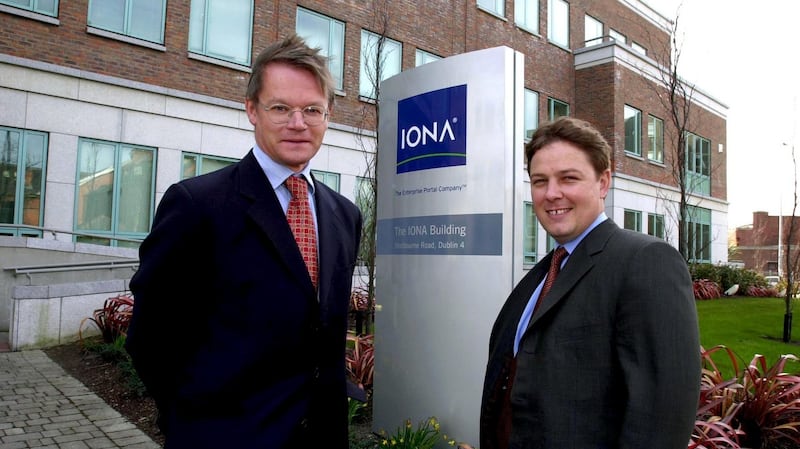It was World Intellectual Property (IP) day on April 26th. Among various acknowledgements here in Ireland, the Technological University Dublin hosted a morning virtual conference. I was kindly invited to join the panel of speakers, on topics chiefly relating to commercialising academic research and start-ups.
World IP day is organised by a Geneva-based agency of the United Nations (UN), the World Intellectual Property Organisation (WIPO). It has almost 200 member states worldwide.
It is reasonably unique among the various arms of the UN in that it almost completely covers its own operating costs using fees earned from its commercial activities, which are primarily mediation interventions in disputes.
The current director general is Daren Tang from Singapore. In a video message celebrating World IP day (available at wipo.int) Tang places a heavy emphasis on small and medium enterprises (SMEs) as the foundation of the world’s economies, and on the role that IP can play in strengthening the SME sector.
He notes that 90 per cent of companies in world are SMEs, they employ 70 per cent of the global workforce and that they collectively contribute half of the world’s economy.
While some businesses may associate IP with patent protection, and is thus perhaps not relevant or affordable for their day-to-day activities, WIPO emphasises the multifaceted nature of IP. As well as patents, there are also trademarks, designs, logos and taglines, and business know-how.
The agency actively seeks to demystify what is involved with IP and how, particularly as a small business, to go about registering and protecting it. In turn, this can enhance the visibility of a business and distinguish it from competitors, especially if it is trading internationally including via a web or social media presence.
Case studies
A particularly interesting section of the WIPO website is the set of almost 100 case studies of companies worldwide (including two case studies from Ireland) of how specific SMEs and business owners went about protecting their IP, and the benefits which resulted. There is a diverse set of business sectors featured: travel and tourism, building materials and fixtures, household goods, health care services, clothing and accessories, farming and fishing, food products, media, leisure and personal goods, restaurants and bars.
The website also includes free searchable databases of some 46 million brand designs and logos; 13 million industrial designs; and 95 million patent applications. The data is contributed by the responsible bodies (typically the national patent office) of many of the member state organisations.
About 10 languages are supported: Russian, Chinese, Arabic, Korean, Spanish and many of the major European languages. A free translation service is also offered on the website, to assist in translating foreign language registrations and patents.

An important service overseen by the WIPO is the Patent Co-operation Treaty (PCT). There is no such thing as an “international patent”. Thus, if an inventor or company wishes to register a patent worldwide, it has to approach various national and regional authorities to work separately with each; the European Patent Office in Munich acts as a regional umbrella for the patent authorities across the EU. This cumbersome process is eased by the PCT mechanism. Under the PCT, a prospective patent can be registered just once in a single (major) language, which then applies across a large number of jurisdictions worldwide, and with a common international filing date.
A preliminary written response assessing the prospective patent with an opinion as to its patentability can then be obtained. Thereafter, the patent applicant does still have to interact with various national and regional authorities, but some of these in turn often rely on the preliminary PCT response, rather than initiating their own search for any prior art and thus saving fees.
Academic spin-out
I was founder and chief executive of an academic spin-out, Iona Technologies, from TCD in 1991, and clarity of the provenance and ownership of our IP played a critical role in our ultimate success. As I explained in my talk to the TU Dublin event, my colleagues and I reached agreement with the university authorities for a formal written letter from the university to our company, which clarified the precise arrangements as to the transfer of any IP from the university to the company. This letter subsequently proved invaluable.
In 1993, a major US computer company, Sun Microsystems (now a part of Oracle Corporation) took a minor equity stake in our company. During its due diligence prior to closing the deal, the letter from TCD provided it with the legal reassurance that it sought. Likewise, during the run-up to our IPO (initial public offering) on Nasdaq in 1997, our bankers – Lehman Brothers – similarly relied on the letter. Both events were naturally strategic milestones for the company, and without this formal agreement beforehand, things might have turned out very differently.
Over time at Iona, we built up a portfolio of registered IP, including patents, trademarks, logos and taglines. Whether your business has a technological focus or whether it is more conventional, brand and knowledge protection should be central to your business planning.













